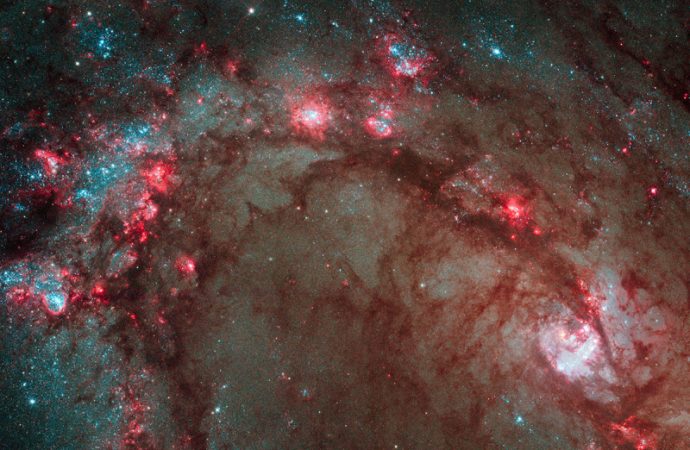The universe could bounce through its own demise and emerge unscathed. A new “big bounce” model shows how the universe could shrink to a point and grow again, using just the cosmic ingredients we know about now.
For the last 50 years, cosmologists have known that the universe began with a singularity, in which all the matter and energy in the universe was compressed into a single point. The trouble with that idea is that the laws of physics break down at a singularity, so it’s impossible to predict what happens there.
Some models of the universe’s origin start the clock shortly after the big bang, when the universe exploded out from the singularity. The reigning theory holds that the universe ballooned in size in the first sliver of a second after the big bang in a period called inflation.
This theory has gone through some ups and downs in recent years, after observations from a telescope at the South Pole appeared to prove it was true, but later fizzled out. Nevertheless, it still has many fans. “Inflation is the champion until dethroned,” says Robert Caldwell at Dartmouth College in Hanover, New Hampshire.
But there have always been alternative models to compete with inflation. One major contender is the “big bounce” model, in which our universe rose from the ashes of an earlier cosmos that ended in a “big crunch”, a process set to repeat when the universe comes to an end. Those models have also struggled to explain the singularity, though.
“The bouncing models until this point had to add extra ingredients or assumptions in order to make sense of how the universe got through or avoided the singularity,” says Neil Turok of the Perimeter Institute in Waterloo, Canada.
In a new paper, Turok and Steffen Gielen at Imperial College London take a different approach. “The spirit of our work is to focus on simplicity,” Turok says. “We’re not adding bells and whistles to the physics we already know.”
The pair focused on a principle from particle physics: the idea that, at very high energies, matter behaves like light. In particular, it becomes scale-invariant – the equations that describe its behaviour are the same no matter the energy of the light, or the size of universe that contains it.
“The universe can shrink to zero and reappear, and the light is none the wiser,” Turok says. “That’s roughly speaking what happens.”
Turok and Gielen applied that principle to a universe that is completely smooth and the same in all directions – not exactly realistic, but that allowed them to write down the equations governing this universe and solve them exactly.
The solution predicts a cosmos that bounces through the singularity in a process similar to quantum tunnelling, which allows electrons to pass through walls or other barriers.
“It’s completely unambiguous: it goes through the crunch and out in a bang,” Turok says.
“This is potentially pretty exciting,” Caldwell says. “They have figured out a way to evolve through a bounce without introducing any funny matter. I think it’s an important step to developing a theory of the early universe that doesn’t resort to inflation.”
The idea is interesting, says Martin Bojowald of Pennsylvania State University. But while those simplifying assumptions might have made it easier to write down a complete equation, they might make it harder to prove that it describes the real universe.
“People start with simple models where they can find exact solutions, but it’s usually difficult to show that these are really generic phenomena,” he says. Another model called loop quantum cosmology also showed signs of giving similar bouncing universes, but things got messy once they dug into the details.
“My experience with loop quantum cosmology makes me much more cautious,” he says. “We have learned the hard way that Murphy’s law is ignored at our own peril.”
The next step is to drop some of those assumptions and try to make a universe that includes fluctuations that give rise to large-scale structures – galaxies, stars, planets and ultimately us.
“Now that we have a sensible description of big bang singularity, we will be able to extend it to describe the origins of the fluctuations and the principle features of the universe,” Turok says. “I think this was a critical logjam. Unless one has a sensible description of the singularity you can’t form a sensible picture of the beginnings of the universe. You have to tackle the singularity.”
Source: New Scientist

































Leave a Comment
You must be logged in to post a comment.